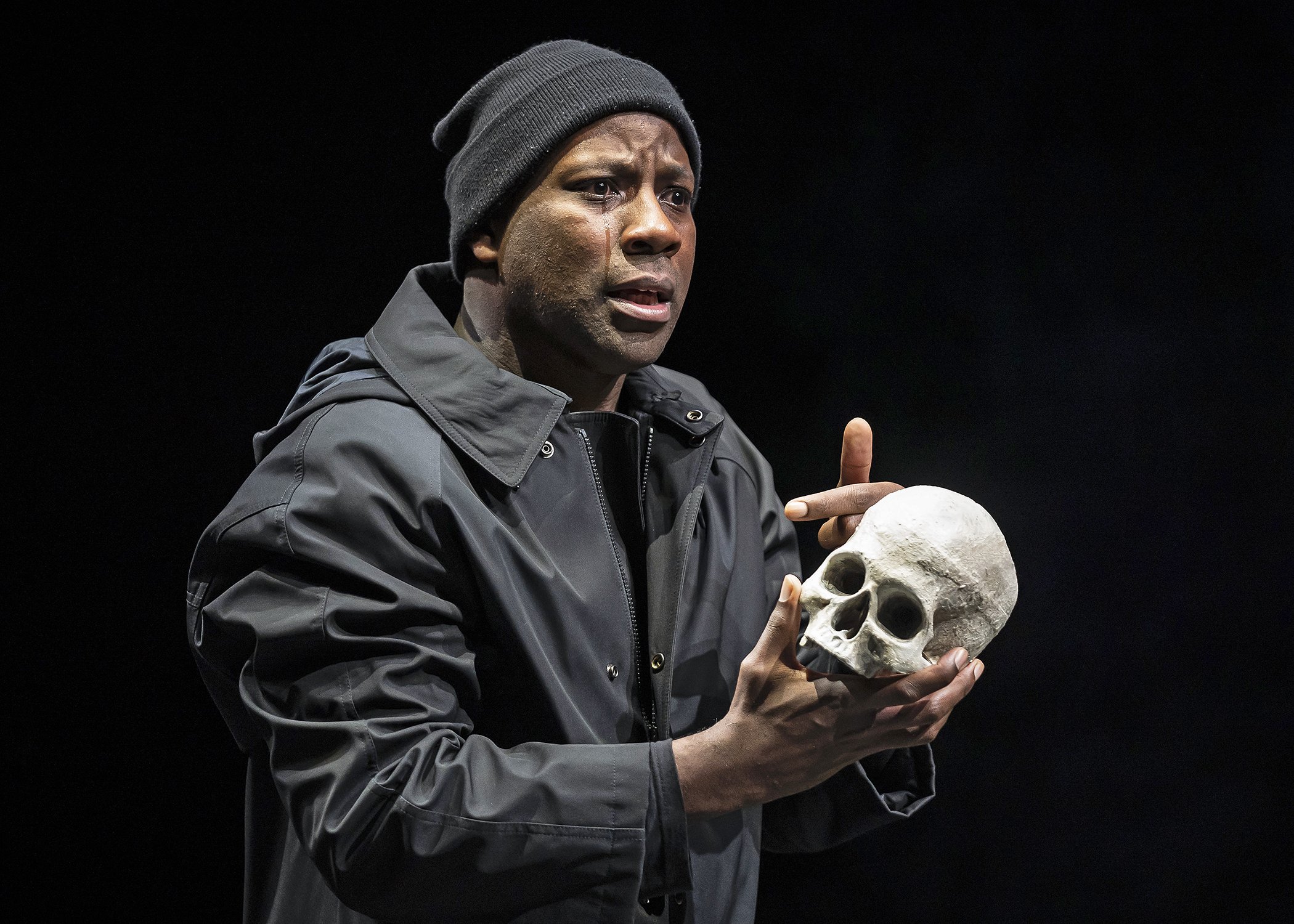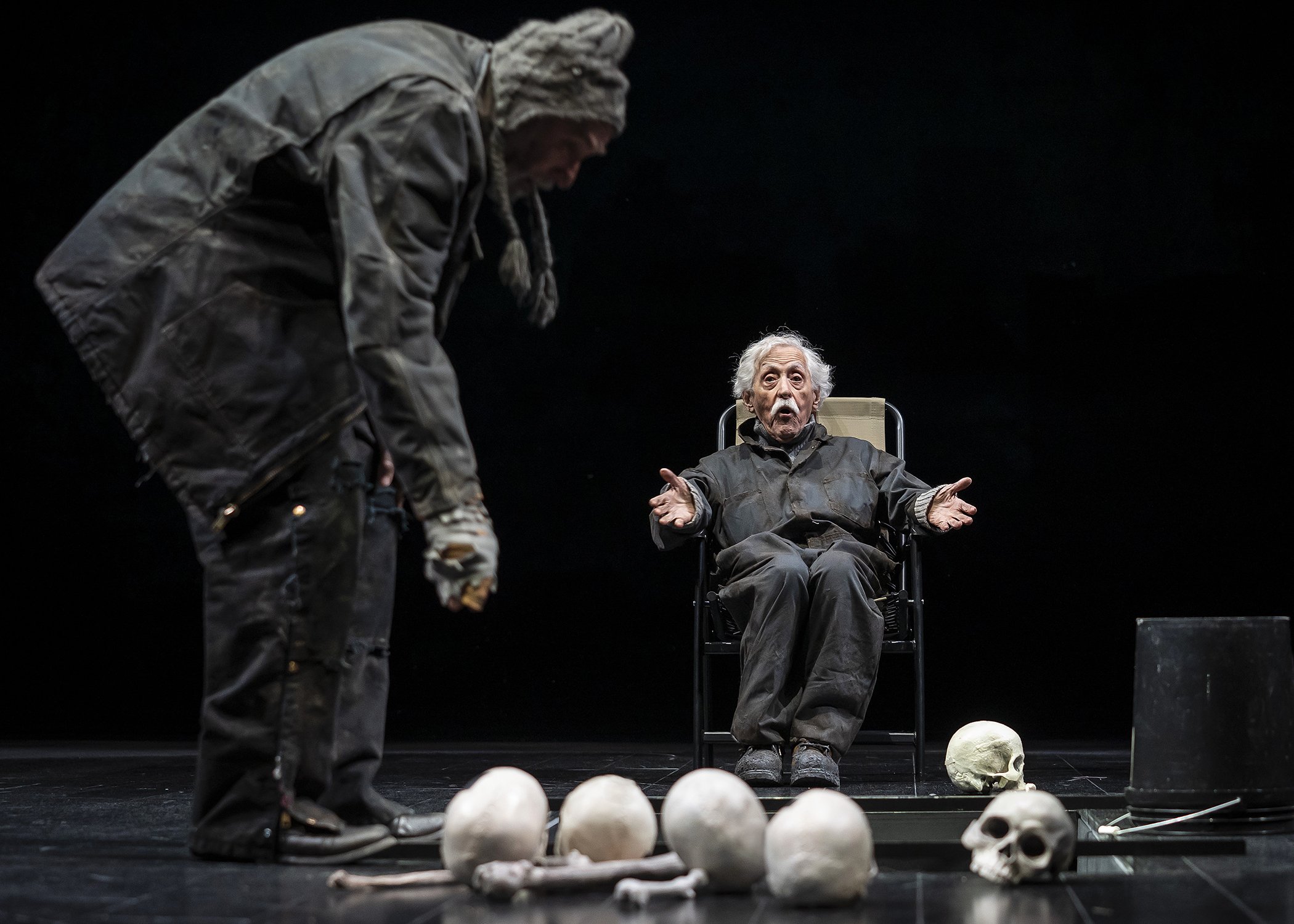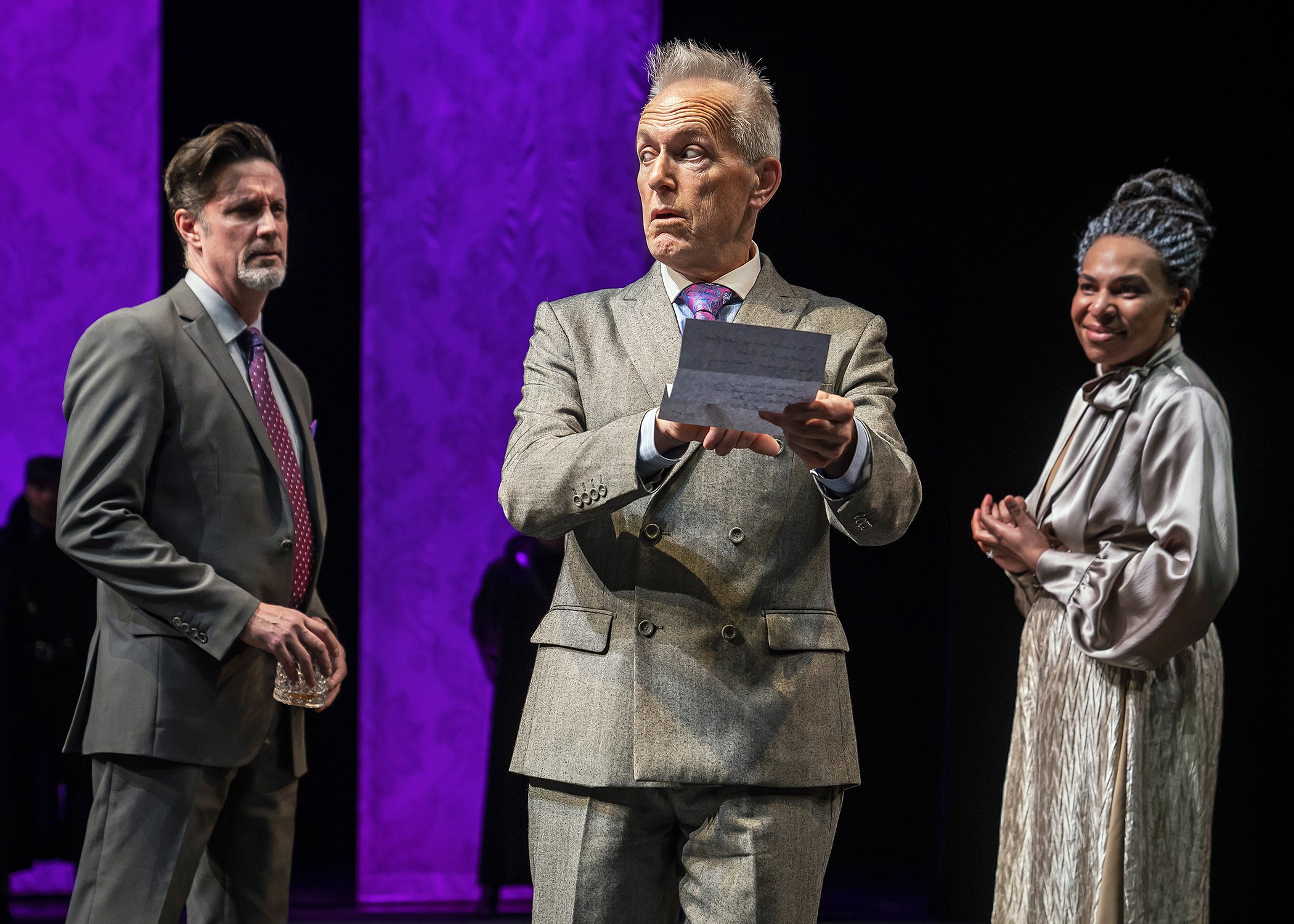Hamlet | Chicago Shakespeare Theater
4 out of 4 stars
(Originally published onChicago Stage Standard)
To be or not to be…The place to be is definitely Chicago Shakespeare Theater this spring! CST brings William Shakespeare’s Hamlet to the Courtyard Theater until June 9th, 2019. It has been more than twenty years since the troubled Prince of Denmark has made an appearance on the CST stage. Artistic Director Barbara Gaines leads the production deep into one of the bard’s most tragic pieces. If you need a refresher from high school English class, Hamlet is a young prince in Denmark who returns home for his father’s funeral only to find that his mother has married his uncle Claudius - now Denmark’s king. Hamlet comes face to face with his dead father, who reveals the grim details of his death, which sparks passion, revenge and existential plight upon the prince.
Gaines’ rendition of this famous work was enriching and the most active and intense version I have ever seen. The audience is zoned so deeply into Hamlet’s character and the plot unfolding with moments were you are snapped out drastically to contemplate larger conceptual themes. Gaines has staged more than sixty productions at Chicago Shakespeare throughout her distinguished career, garnering the prestigious Honorary OBE (Officer of the Most Excellent Order of the British Empire) and Joseph Jefferson Awards for Best Production (Hamlet, Cymbeline, King Lear, and The Comedy of Errors), and for Best Director (Cymbeline, King Lear and The Comedy of Errors). The blocking is excellent in the ways that the space is utilized to its full potential both vertically and horizontally. Characters entrances and exit through the aisles is always a treat at CST, but additionally you have moments of rain whisking down from above, as well as steam rising from sunken saunas. Gaines truly stretches the space into a world of its own. A big hats off to the production styling and direction for this work.
The foreshadowing sprinkled throughout the piece was a visually good measure. The scenic designer Scott Davis masterfully uses water being a thematic moment was a wonderfully way to portray the dynamic ability the element holds in being not only a representation of sadness, but ever-changing. From tears to hurricane, Hamlet’s relationship with each character is ripped apart and examined through his efforts towards making wrongs right. Jones portrays Hamlet raging mania and soft contemplative moments. Graves and water hold this performance together and guides the audience forward through this tragedy. Additionally, the contrast between this natural element is the throne room set like a club scene with LED lighting under thrust’s first step, as well as three paneled curtains hang behind the clear acrylic thrones. I’m sure there’s some psychological design at work with the way clubs look in order to distract and encourage merriment, but I enjoyed this aspect as like the club wants its patrons to continue drinking, so does our Claudius in order to continue his charade. Tim Decker portrays Hamlet’s uncle and adversary Claudius. Decker with a swagger like a wolf at a sheep’s party, he commands the room, but also has the ability to break that character down into a complex uncertainty.
Taking on the titular role is Maurice Jones, who most recently appearing on Broadway in The Lifespan of a Fact opposite Daniel Radcliffe, Jones is an accomplished classical performer whose Broadway credits include Saint Joan staged by Tony Award-winner Daniel Sullivan, The Cherry Orchard featuring Diane Lane, Romeo and Juliet starring Orlando Bloom and Condola Rashad, and Julius Caesar with Denzel Washington—as well as credits at the Public Theater and Roundabout Theatre Company. Jones is a stunning Hamlet. His monologues are navigated through peaks and valleys that only an actor with acute attention to character study and a honed talent can do justice to. He powerfully highlights streams of consciousness, while tapping into a quirky macabre.
Hamlet’s relationships begin to disintegrate further and further into the plot. Rosencrantz and Guildenstern are wildly abused. They are caught between cross fire in moral obligation to king and country and loving kinship to their friend Hamlet. Alex Goodrich and Samuel Taylor portray the duo and subtly convey a higher existential thinking exemplified from Tom Stoppard’s classic with side glances, but a victimization of friends betrayed is really zoned in.
The theater company that comes to the palace are characterized in the punk genre. This decision is a brilliant incorporating themes that already exist in the play to reflect visually outwards. The Punk genre is known for its anti-establishment, anarchy and do-it-yourself mentality. Okay, so pretty self-explanatory to our story, usurper to the throne and all, but further this stylistic choice was made also to break down the barrier between the performers and audience. The players representing the common folk putting on costumes and acting like royals in a play, the audience in its seats watching Hamlet begin to connect with the emotions Hamlet feels- it heightens our connection to him by seeing that something is wrong within his world and makes us reflect upon our own life struggles. Additionally, there is a comfort in the morose and morbid that the punk culture embraces, which translates well to this production.
Obviously this production holds a star studded cast, so quickly I would like to highlight a few. In his twenty-fifth Chicago Shakespeare production, Larry Yando performs the role of Polonius. The five-time Jeff Award-winner—named “Best Actor in Chicago” by Chicago Magazine—is a mainstay on Chicago stages, including eleven seasons as Ebenezer Scrooge in the Goodman Theatre’s A Christmas Carol. Yando thrills the audience with excellent inflection and full body acting that has such life and vigor only a seasoned professional can evoke.
Hamlet is not the easiest play to keep audiences interested in due to some large monologues and slow plot building context. The visual balance of this production plays into stripping back and exposing the rich language enabling actors to give the piece the subtly it demands. It’s a refreshing version set against a dark black stage with the morose thrust and it is a perfect setting for the dark drama. The audio and movement of King Hamlet’s ghost was particularly striking. The projections designed by Mike Tutaj mixed with physical smoke gave the perfect eerie feeling. Large scale projections on two large scrims upstage were very reminiscent of the massive portrait moments within Joffrey Ballet’s Anna Karenina this past season. This growing love affair with projections in theater showcases the new media formats use that surround the real actors amid their environment. Sound Designer Lindsay Jones blends tangible and visual worlds through a 360 experience. Paired with an almost completely dark theater, flashlights and spots selecting your visual focus, the auditory sense is heightened and Jones does not disappoint with keeping the audience on its toes.
An interesting choice in costuming is like 1910’s/20’s era gowns and suits. The costuming is very reflective of the characters, but I was particularly struck by the women of the performance. Costume Designer Susan E. Mickey and Wig and Make-up Designer Richard Jarvie work to make queen mother Gertrude (Karen Aldridge) and Ophelia (Rachel Nicks) reflective a blue toned melancholy. Aldridge’s hair seemed to catch the light and hold blue woven pieces in it, while Ophelia’s tulle skirts were a pale baby blue. These strong female characters were designed with soft lines and soft textures. Ophelia in an adolescent pairing boots and skirt, while Gertrude struts around in a soft taffeta / organdy white wide pant suit that mimics a flowing dress. Nice touch to Gertrude’s power beneath the outward meek abiding housewife Claudius has seduced her into. Hamlet and Ophelia are both dressed in soft textured sweaters – this was also a nice touch in regards to these characters experiencing signs of depression, isolation. These soft textures are often a comfort to introverts or those struggling with mental health. Nicks’ portrayal of Ophelia was heart-wrenchingly beautiful. Her subtly and quick capture between sanity and hysteria was remarkable. The return of Hamlet to the CST stage is a wonderful evening full of action, drama and reflection. It is an engaging production that incorporates such thought and care in the presentation. Well done all!
Hamlet is now playing at Chicago Shakespeare’s Courtyard Theater until June 9th, 2019. For more information or to purchase tickets, contact Chicago Shakespeare Theater’s Box Office at 312.595.5600 or visit the Theater’s website at www.chicagoshakes.com.
Chicago Shakespeare strives to make its facility and performances accessible to all patrons through its Access Shakespeare programs. Accessible performances for Hamlet include:
Audio-description – Sunday, May 19, 2019 at 2:00 p.m. with optional touch tour at 12:00 p.m.
ASL Duo-interpretation – Friday, May 31, 2019 at 7:30 p.m.
Open-captioning – Thursday, June 6, 2019 at 1:00 p.m. and 7:30 p.m.



